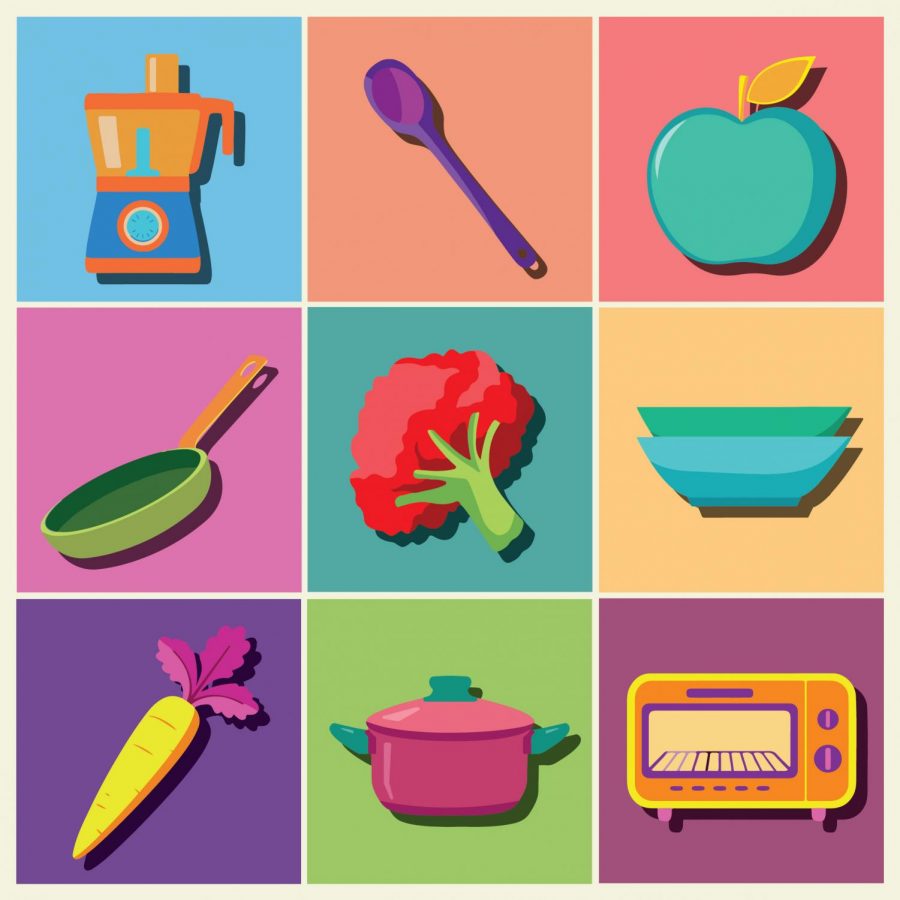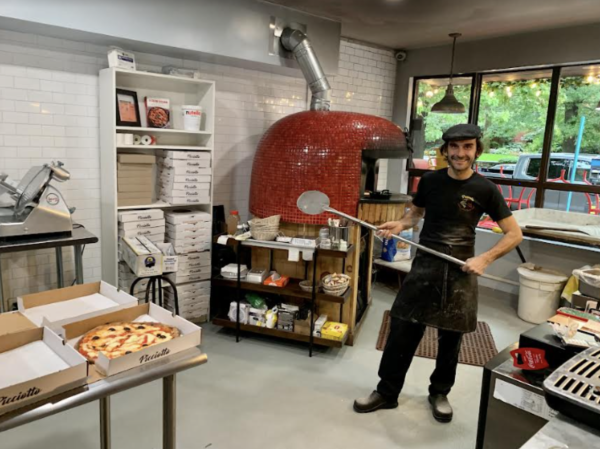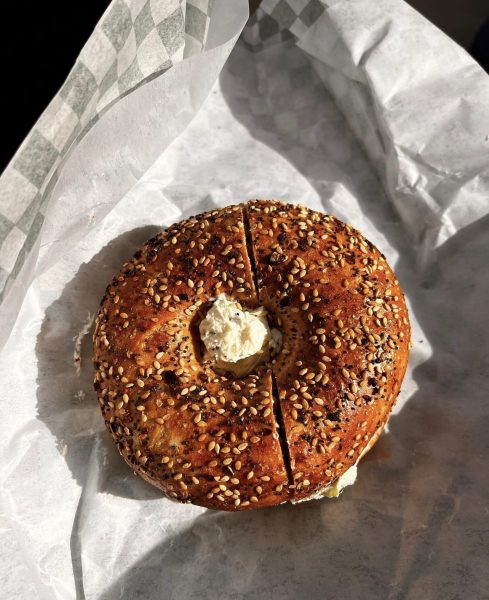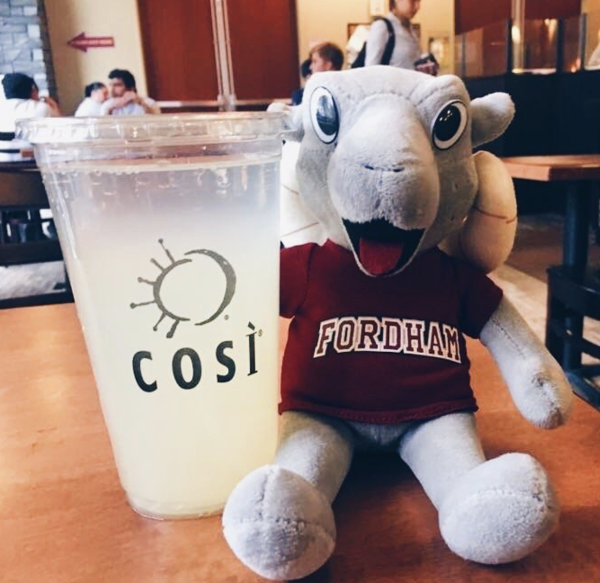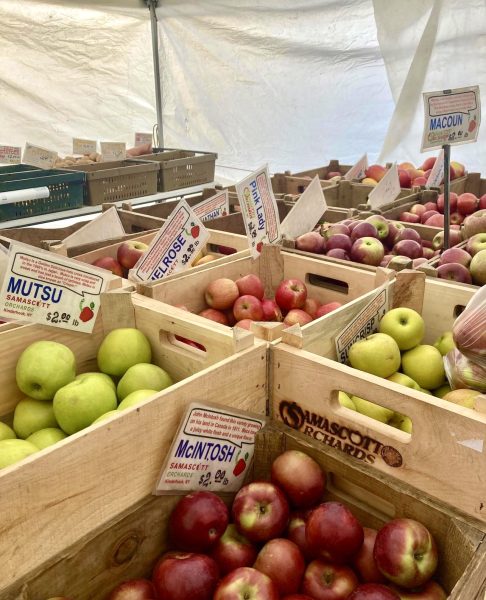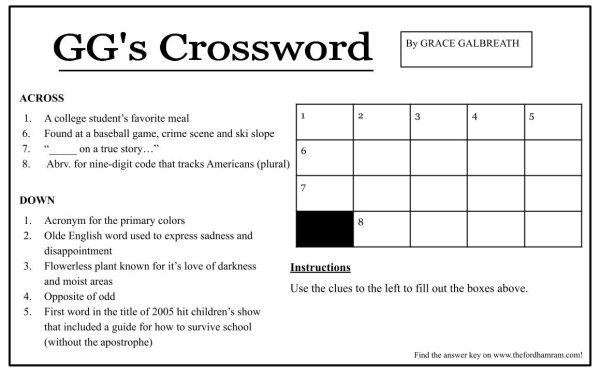How to (or not to) Cook for Yourself in College
Ava Erickson provides tips and tricks for students interested in cooking on campus. (Courtesy of Pia Fischetti for the Fordham Ram)
As students return to college this fall, after spending over a year stuck at home, many of us are learning how to take care of ourselves for the first time. Cooking for yourself can be one of the most daunting aspects of this newfound freedom. Here are a few essentials, cooking hacks and mistakes to avoid.
When shopping for kitchen supplies it can be really easy to overbuy, but most student apartments and Fordham dorms have small kitchens, so try to only purchase the essentials: one big pot, a saucepan, a frying pan, a wooden spoon, tupperware, dishes and silverware. In terms of appliances, a toaster oven is key––they are perfect not only for toasting bread and bagels, but also for roasting vegetables or frozen dishes. They work just like an oven but are faster and don’t heat up the entire room.
You should also invest in a food processor. It can be tempting to get a blender if you’re a smoothie fan but food processors are a better option. You can make your morning smoothie as well as a variety of other things, like pesto or hummus.
Once you have all your supplies and appliances, it’s time to tackle the grocery store. It can be overwhelming, so it is important to be organized before you go. I recommend making a “master grocery list” first. Here, you can write everything you could possibly want to buy by category (ex. produce, grains, condiments, etc.). Next, in the notes app on your phone, create categories that relate to your grocery store (ex. front produce, aisle one, frozen, etc.). As you run out of ingredients or plan meals, add them to your grocery list. This system makes for the most efficient grocery trip, even if it’s a little anal.
One of the best hacks for cooking as a student is to “elevate” your classic college meals. For example, add sautéed onions, spinach and bacon to your boxed mac and cheese. Or, my personal favorite, add vegetables and an egg to instant ramen, trash the high sodium seasoning packet and mix in teriyaki sauce to season the broth. This is a , but equally cheap way to get a quick meal in.
Meal prepping is another great way to save time and stay healthy. At the beginning of the week make a bunch of rice or pasta, vegetables and protein (tofu, sausage, chicken etc.) and store them in your refrigerator. Then, you can just pop them in the microwave (or on the stove if you don’t have one) to have an instant meal.
Be sure to eat breakfast! It can be tempting to skip, but we’ve all heard that breakfast is the most important meal of the day and it’s true! Many people say it takes too much time in the morning, but there are plenty of ways to save time and still get those early morning calories. First, eat oatmeal. Instant oatmeal takes only a few minutes to make (either in the microwave or with hot water); add some peanut butter and frozen berries and you’re set to go in under five minutes. Second, meal prep a breakfast bar (this one is one of my favorites) and bring it with you on the go. Finally, eat some toast. All it takes is a few minutes in your toaster oven and your favorite toppings to make a delicious breakfast.
You’re learning a new skill so you’re bound to make a few mistakes, but here are a few that my friends and I have made to give you a head start. First, know oil smoke points. NYC apartments and dorms have very sensitive smoke detectors, so if you are cooking something on high heat make sure you pick an oil with a high smoke point to avoid that embarrassingly loud alarm.
Some produce is really expensive. Berries, avocados, peaches and pears can have a heavy price tag, so if you are on a budget, opt for cheaper produce like apples and carrots for your weekly meals.
Don’t pour grease from cooking down the drain. It solidifies in the pipes and causes them to clog. Instead, pour it into a bowl, wait for it to cool and solidify then throw it in the trash.
Most importantly, always be cautious about what could cause a fire. With small kitchens, storing pans in the oven is a great use of space but be sure to remove them before you cook. When I first moved into my apartment I turned on the oven not realizing a wooden cutting board was in the broiler drawer. A few minutes later, the room was filled with smoke. After opening the oven, I saw flames coming out of the bottom and I had to use the fire extinguisher to put it out. About eight fire trucks surrounded our building and the firemen stormed our apartment. It was a scary and embarrassing experience, so learn from my mistakes, and take everything out of your oven before you turn it on. And be sure you know where your fire extinguisher is located!

Ava Erickson is a senior from Denver. Her passion for writing and language led her to double major in journalism and Spanish studies. She began working...

